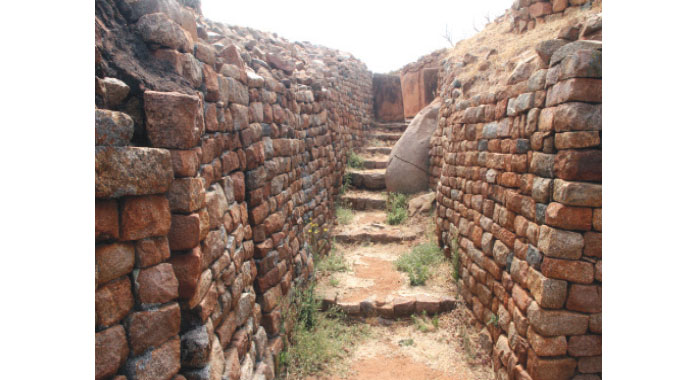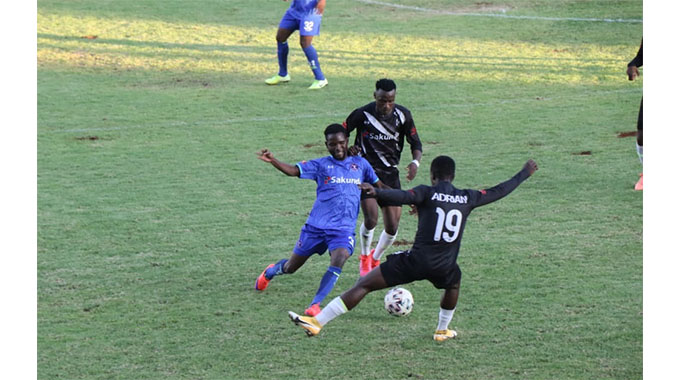Khami National Monument: Zimbabwe’s beautiful gem

Bongani Ndlovu, Chronicle Reporter
THE Khami National Monument is a beautiful gem that tells the story about Zimbabwe’s civilisation.
The monument, which is a Unesco World Heritage Site, is situated some 20km from Bulawayo and was the centre of attention during Independence Day main celebrations.
The Independence Flame was lit there and began its journey around the city of Bulawayo’s western suburbs.
It was lit on Saturday morning by Vice- President of the ruling Zanu-PF party, Cde Kembo Mohadi.
On Sunday it was taken around Bulawayo paraded in the back of a pick-up truck to various western suburbs and people were intrigued by it.
Khami National Monument tells of a time and that of a people who were technologically advanced who could carve out stone and build structures where they could live.
The structure and architecture stand as evidence that colonialists indeed did not bring any form of civilisation into Africa and modern-day Zimbabwe, but they actually found people who were far advanced.
Khami National Monument was the capital of the Torwa dynasty, which arose from the collapse of the Great Zimbabwe Kingdom between 1450-1650 and was abandoned during the Ndebele incursions of the 19th century.
Interestingly, it has its influence from the Kingdom of Mapungubwe, which is situated in South Africa located at the confluence of the Shashe and Limpopo rivers, south of Great Zimbabwe.
Having the Independence Flame stationed at the Khami National Monument brought the attention of the nation to the site and it saw increased interest in it.
During a briefing last week, Minister of Local Government and Public Works July Moyo said Khami National Monument was an important tourist attraction in Zimbabwe.
“Khami is an important monument here in Zimbabwe, maybe second to Great Zimbabwe, maybe to its stature,” said Minister Moyo.
“The beneficiary of all that we are doing, is the Ministry of Tourism, because once people understand, and know what it is, it should be one of the major tourist attractions in this country.”
The Khami National Monument takes one through a journey back into time and with each platform that one explores they try to imagine how the people from old lived.
It is clear that the king was a well-protected person, judging by where the Kings Enclosure or Residence is situated. It is at one of the highest points and the staircase leading to it is steep, winding and narrow.
Behind the King’s Enclosure is Khami River, with a sharp climb, that needs a very skilled person to get up there, and this perhaps shows that the positioning was for the king and his guards, not to be flanked by an attacking enemy.
To the south of the King’s Enclosure, there is a granary and it again is situated on a high place, and from there the King or one could see the grain stocks.
Last week when a Chronicle news crew visited the site, a group of tourists who were staying in the city, were clueless as to what Khami National Monument was all about.
They said it reminded them of Great Zimbabwe National Monument in Masvingo, but they deduced from the similar structure that it could be the same people who built the two.
Khami National Monument is also the second largest such structure in the country after Great Zimbabwe.
However, some families that come to Khami National Monument do not get to visit the whole site because of lack of tour guides.
So, they rather make use of the braai area to cook food and have their drinks, without exploring the monument.
Or if they do, they just find the King’s Enclosure as it is the most visible site, climb to the top, take pictures and go back to their braai area, without knowing who the King was, why the site was built, by who and when.
This information is readily available at the Site Museum, which also shows the reptiles, insects, birds and mammals found in the area, such as black mambas, baboons and the Mozambican spitting cobra.
There is also the need for the monument’s protection and restoration.
National Museums and Monuments director Dr Godfrey Mahachi said plans are in place to restore the monument.
“The challenge with stone walled monuments is that they weaken with time. But a restoration programme which is consistent will ensure that the monuments remain standing for eternity. The Vice-President and Second Secretary of the party did emphasise the need for us to continue on working on restoration programmes which we are doing, at other sites but we will do more at Khami,” said Dr Mahachi at the lighting ceremony on Saturday, during an interview with Zimpapers Television Network.
Ruins around the country include, in Mashonaland East Tsindi Ruins next to Marondera and Mtoko Ruins. In Mashonaland Central there is Masembura, Garaubikirwe and Matanda Achiwawa.
In Matabeleland North there is Shangano Ruins, Halfway Ruins, Mtoa Ruins and Bumbusi Ruins all found around Hwange, and in Matabeleland South there is Khami, Kingezi Ruins and Maphela Ruins. In the Midlands there is Nsalansala Ruins, Bhila Ruins, Nalatale Ruins, Danangombe (Dhlodhlo Ruins) and Ntabazikamambo Ruins.
In Manicaland Chipadze Ruins or Harleigh Farm Ruins, Ziwa Ruins which were the centre for agricultural terracing and in Masvingo there is Great Zimbabwe, Majiri Ruins and Musimbira Ruins.
— Follow on Twitter @bonganinkunzi








Comments